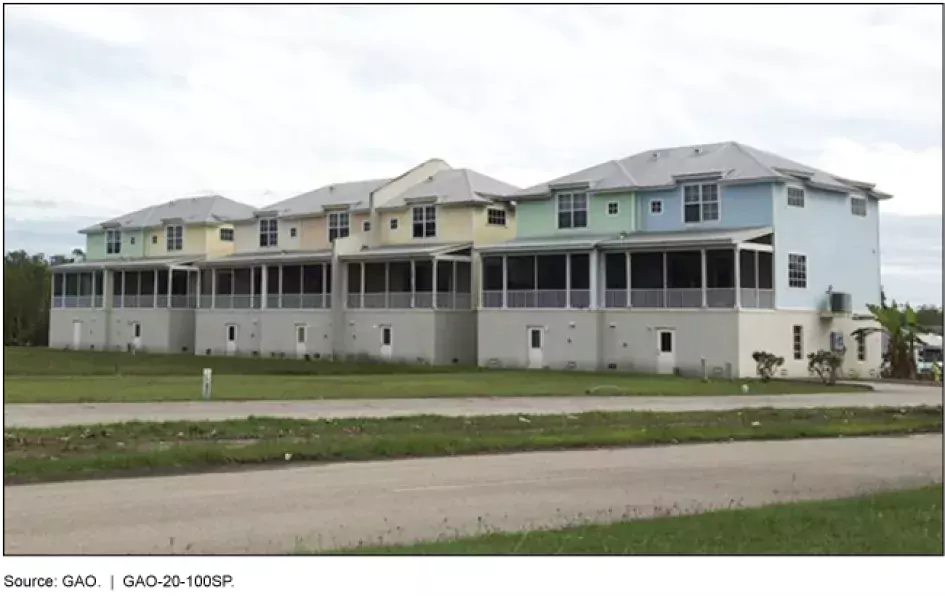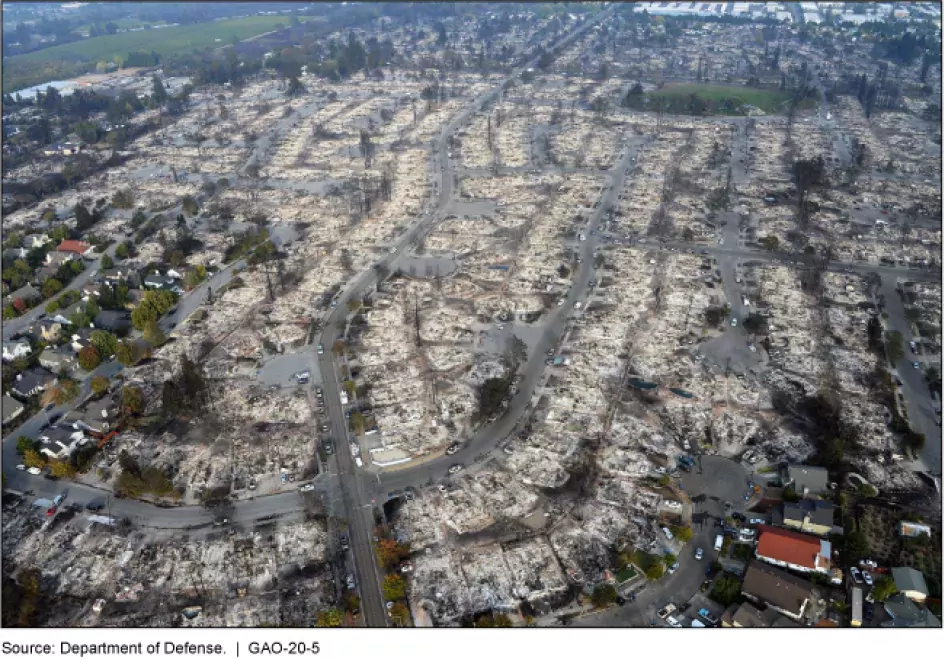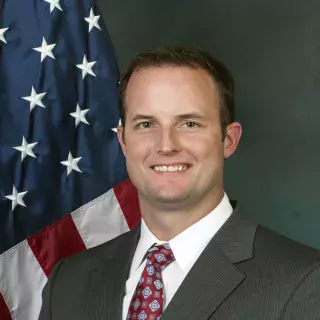Federal Money for Disaster Recovery and Resilience Could Be Spent Better
Rebuilding and recovering from disasters, such as hurricanes and wildfires, can take years. Millions of Americans and hundreds of communities are affected by disasters each year. As these events increase in number and severity, so has the reliance on federal disaster assistance and taxpayers' dollars. But, in our work, we’ve found that these tax dollars could be used more effectively.
Today’s WatchBlog post looks at our new Snapshot on Disaster Assistance—exploring ways to improve federal disaster recovery, disaster resilience, and the processes for assisting survivors. And check out our video below with GAO’s Chris Currie, an expert on federal disaster assistance programs. In the video, Chris discusses his visits to communities across the nation impacted by disasters and some of the challenges they faced in their recovery efforts.
Billions in aid, but communities struggle accessing it
The federal government has provided billions of dollars to communities recovering from disasters. However, state and local officials leading recovery efforts have long expressed frustration with the federal approach to disaster recovery.
This is in part due to breadth and overlap in federal programs. Federal disaster recovery programs are spread across more than 30 federal entities, making it difficult for communities to figure out who to turn to for help. For example, 19 federal agencies were appropriated funds for more than 60 programs involved with providing support after Hurricane Sandy in 2012, which damaged or destroyed more than 650,000 homes. State and city officials involved in Sandy-affected areas told us that challenges navigating federal programs limited their ability to maximize federal funding—resulting in missed opportunities.
We’ve identified 11 policy options that could improve the delivery of federal services to communities after a disaster. These options range from improving collaboration across federal agencies to streamlining disaster assistance programs to reimagining the federal role. But we also think federal agencies will need help, outside of their authority, in addressing these issues. We suggested that Congress establish an independent commission to recommend reforms to the federal approach to disaster recovery. Identifying specific actions for reform could provide Congress and federal agencies ways to speed and improve community recovery after disasters.
Getting ahead of the hurricane by investing in disaster resilience
One way to more effectively use assistance, reducing the impact on communities and the cost to taxpayers, is to strengthen disaster mitigation and planning efforts—also known as building disaster resilience. Disaster resilience includes a broad range of activities. For example, elevating homes and strengthening building codes in Texas and Florida prevented greater damages during the 2017 hurricane season.
We’ve developed a guide for federal agencies and policymakers to help mitigate the effects of tomorrow’s natural disasters. Our Disaster Resilience Framework lays out three broad principles to guide efforts:
- Information—Ensuring decision makers can accurately assess risks, decide what to do, and measure outcomes
- Integration—Coordinating federal efforts and recognizing connections for a “whole system” perspective
- Incentives—Providing financial and other incentives and reducing disincentives
Since 1980, weather and climate disasters have caused trillions in damage. Investing in disaster resilience will not only help communities and citizens prepare for the future, but reduce the costs to taxpayers.
Elevated homes with tin roofs in Florida to protect them from wind damage
Image

Disaster assistance isn’t just rebuilding, it’s also addressing disruptions to daily life
Disaster survivors often face many challenges, including damage to their homes, unemployment, and lack of child care following a disaster. The federal government can provide assistance to help with these impacts. However, survivors have reported difficulties obtaining this aid. For example, we found some applicants did not understand the application requirements and FEMA did not fully explain them. This may have prevented many survivors from being considered for and awarded certain types of assistance.
To help survivors navigate assistance requirements, we recommended FEMA better explain its program requirements to survivors.
The Tubbs Fire destroyed homes in Santa Rosa, California, in October 2017
Image

We also voiced concerns that FEMA hasn’t assessed the accuracy of its process for estimating damage to homes to determine whether survivors are receiving the appropriate amount of assistance. In 2020, FEMA streamlined its approach to estimating damages.
Under this streamlined approach, we found that average awards to survivors were 35% lower. We recommended that FEMA assess this approach and adjust as needed. Doing so would help to ensure survivors are receiving awards that accurately reflect the damage that is eligible for assistance.
Since federal disaster assistance is so widely used and a key source of increasing costs for the government, it’s important that federal agencies use these funds effectively and efficiently. Check out our new Snapshot on disaster assistance to learn more.
- Comments on GAO’s WatchBlog? Contact blog@gao.gov.





